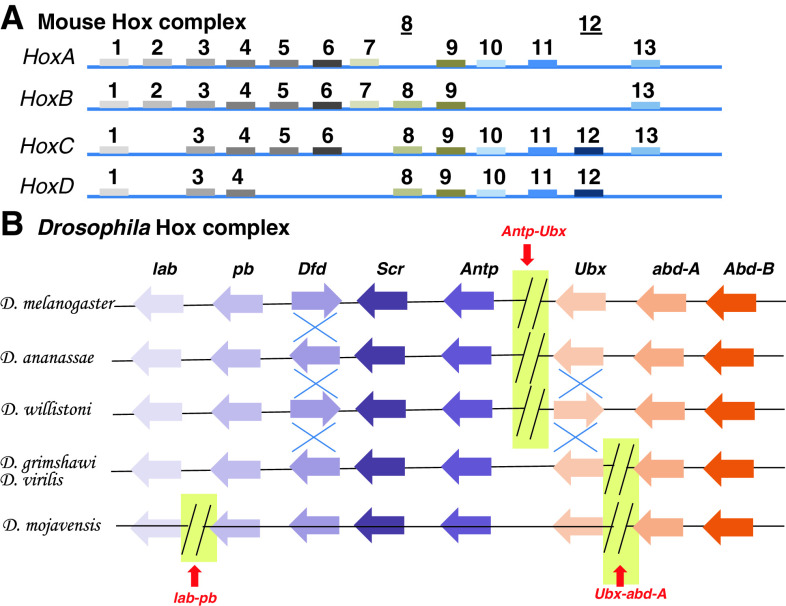Fig. 2.
Hox complex of Mouse and Drosophila. a The mouse Hox complex is separated into four clusters, namely HoxA–D. They help in formation of anterior to posterior structures of the mouse body axis, respectively. The four clusters contain from 9 to 11 paralogue genes. These genes are arranged in the same order as they are expressed along the body axis. For example, the mouse HoxA1 is expressed in the head regions and HoxD13 in the distal regions of the limbs. b The fly hox cluster on the other hand is split into two complexes in D. melanogaster to form the Antennapedia complex (determining head to T2 segments) and the bithorax complex (determining T3 to A8 segments). This complex is conserved among the other fly species with some gene inversions (shown by blue cross) as seen for Dfd and Ubx genes and shifting in breakpoints of the cluster (red arrow). There are three splits known in Drosophilids as shown in the figure between lab-pb, Antp-Ubx and Ubx-abd-A. These splits do not impair the collinear expression of the Hox genes along the A–P body axis

